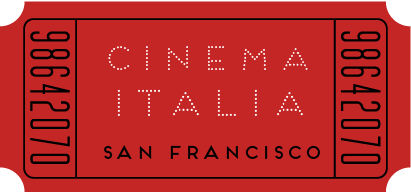




With The Conformist, Bertolucci was anything but, distinguishing himself with a sumptuous masterpiece that delves into the clash between repressed guilt and political acquiescence. The titular “conformist,” Marcello Clerici is a suave intellectual who has risen through the ranks of Mussolini’s fascist government. A long sublimated molestation has driven him to seek “the impression of normalcy,” so he forfeits all moral value in the pursuit of anonymity. When he is sent to Paris to organize the assassination of his former mentor, an antifascist professor, Clerici must confront his tortured past. Bertolucci’s chilling study of the fascist personality is told through flashbacks refracting as though through a faceted gemstone. The accumulating story is re-collected via an exacting design of Art Deco excess, disorienting scale, and uncanny lighting. Clerici (portrayed by Jean-Louis Trintignant with unnerving control) is captive to an interior inertia reflected by these strident surroundings. Throughout his films, Bertolucci has perused the interplay of moral convention and psychological failing. The Conformist breaks with the norm in its lavish condemnation of follow-the-leader.
—Steve Seid, Pacific Film Archive, UC Berkeley
Written by Bernardo Bertolucci, based on the novel by Alberto Moravia. Photographed by Vittorio Storaro. Starring Jean-Louis Trintignant, Stefania Sandrelli, Dominique Sanda, Pierre Clémenti. Print Source: Istituto Luce- Cinecittá S.r.L. Bertolucci US. Permission: Paramount Pictures.
Print Source: Kino Lorber, New York City

In Bernardo Bertolucci's art-house classic, Marlon Brando delivers one of his characteristically idiosyncratic performances as Paul, a middle-aged American in "emotional exile" who comes to Paris when his estranged wife commits suicide. Chancing to meet young Frenchwoman Jeanne (Maria Schneider), Paul enters into a sadomasochistic, carnal relationship with her, indirectly attacking the hypocrisy all around him through his raw, outrageous sexual behavior. Paul also hopes to purge himself of his own feelings of guilt, brilliantly (and profanely) articulated in a largely ad-libbed monologue at his wife's coffin. If the sexual content in Last Tango is uncomfortably explicit (once seen, the infamous "butter scene" is never forgotten), the combination of Brando's acting, Bertolucci's direction, Vittorio Storaro's cinematography, and Gato Barbieri's music is unbeatable, creating one of the classic European art movies of the 1970s, albeit one that is not for all viewers.
Written by Bernardo Bertolucci and Franco Arcalli. Photographed by Vittorio Storaro. Starring Marlon Brando and Maria Schneider. Print Source: Istituto Luce-Cinecittá S.r.L. Permission: Park Circus

The new 4k restoration and 3D conversion of nine time Academy Award-winning film The Last Emperor from legendary director Bernardo Bertolucci. 2013 marked the 25th anniversary of the first international release of this masterpiece in 1987. A reel of the film was sent to be screened at the Cannes Opening Ceremony in 1987 as a gift from Bertolucci. A film of unsurpassed splendour, The Last Emperor was beautifully shot with attention to the smallest detail in the production design, costume and cinematography, and the 4K 3D conversion allows an audience to really appreciate the magnificence of this cinematic experience. The sound has also been remastered from the original 6-track to make the most of Ryuichi Sakamoto’s exquisite score. The film follows the life of Emperor Pu Yi, who took the throne at age three in 1908 before witnessing decades of cultural and political upheaval, within and without the walls of the Forbidden City. Recreating Ching dynasty China with astonishing detail and craftsmanship by cinematographer Vittorio Storaro, production designer Ferdinando Scarfiotti and costume designer James Acheson, The Last Emperor is also an intimate character study of one man reconciling personal responsibility and political legacy. Winner of 9 Academy Awards, including Best Picture and Best Director, 3 BAFTAs including Best Picture and 4 Golden Globes including Best Director.
"It probably is unforgivably bourgeois to admire a film because of its locations, but in the case of "The Last Emperor" the narrative cannot be separated from the awesome presence of the Forbidden City, and from Bertolucci's astonishing use of locations, authentic costumes and thousands of extras to create the everyday reality of this strange little boy."
–Roger Ebert, December 9, 1987
Written by Bernardo Bertolucci and Mark Peploe. Photographed by Vittorio Storaro. Starring John Lone, Joan Chen, Peter O'Toole, Ying Ruocheng, Victor Wong, Dennis Dun, Wu Jun Mei, Maggie Han, Ric Young, Jade Go, Cary Hiroyuki Tagawa and Ryuichi Sakamoto. Print Source and World Sales: HanWay Film, London.

Based on the acclaimed novel by Paul Bowles, The Sheltering Sky stars John Malkovich and Debra Winger as a sophisticated couple, married for ten years, who have come to the African desert in search of renewal and personal inspiration.
“The Sheltering Sky is a long, beautifully modulated cry of despair. It's the sort of dark, romantic movie that only Mr. Bertolucci. The time is shortly after the end of World War II, when the civilized world is still trying to rediscover the reassuring boundaries of commonplace routine. The film somehow manages to find cinema equivalents to the Bowles prose in which exterior and inner landscapes are evoked with the same fine clarity of expression.….Like the novel, which is piercing and specific even when it is describing emotional inertia, the movie makes the unhappy love story of Port and Kit seem vital, and inseparable from the terrain in which it all comes to an end. "The Sheltering Sky" is stunning to look at (Vittorio Storaro was the cameraman), but it is never simply picturesque. It mesmerizes.”
–Vincent Canby, The New York Times, December 12, 1990
Written by Mark Peploe and Bernardo Bertolucci, based on the novel by Paul Bowles. Photographed by Vittorio Storaro. Starring Debra Winger and John Malkovich. Print Source: Istituto Luce-Cinecittá S.r.L. World Sales: HanWay Film, London
